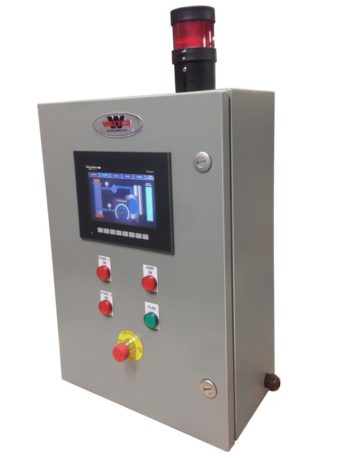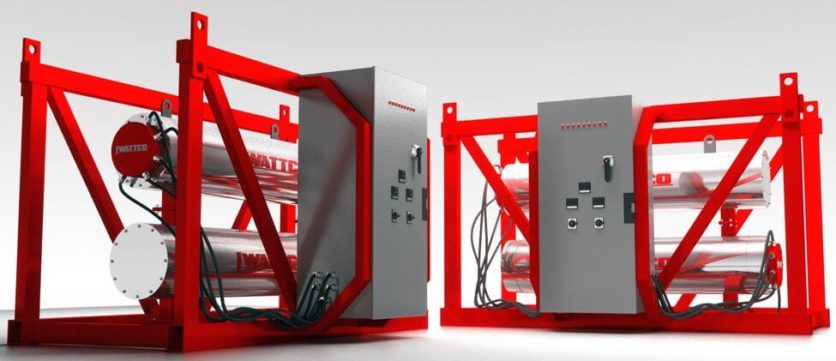Fire Risks & Prevention Tips in Thermal Fluid Heating
 Despite all the safety precautions and guidelines, fires still happen in thermal fluid heating processes. Any process where fuel, air, and an ignition source meet, has a potential fire risk.
Despite all the safety precautions and guidelines, fires still happen in thermal fluid heating processes. Any process where fuel, air, and an ignition source meet, has a potential fire risk.
Yet, safe thermal fluid heating is possible in any industry. Choosing the right equipment, installation, and maintenance can significantly reduce the risks of fires. Forward-thinking heating solutions help put you in control of workplace safety. This means you can protect your workers and your product.
We identified some of the most common causes of fires in heating thermal fluids, as well as how to minimize the risks.
Leaks
Leaks can occur over time and are most common around connections and seals. The size and location of the leak have a big impact on the risk. A larger leak, especially around pump seals or flex hoses, has a much higher fire risk. The size and location of the leak can release a lot of vapor, which can ignite easily.
Smaller leaks don’t typically pose a big risk. Although, they should be addressed early on to prevent them from becoming worse.
The main fire hazard for a small thermal fluid leak is the insulation. More porous insulation, like mineral wool, can catch fire if the fluid soaks into it.
It’s important to be mindful of insulation around vulnerable areas like valves and seals. This means preventing leaks by choosing non-porous insulation.
Solutions
Leak prevention starts with the installation. Properly fitting connections, joints and seals can significantly reduce the risk of leaks. Mindful use of insulation can also help prevent small leaks from igniting or leaving burns and stains.
The materials used for the immersion heater, housing, and tank are also important. The materials need to be able to withstand the temperatures and chemical properties of the thermal fluid to prevent failure.
After installation comes maintenance. Thermal fluid heater maintenance not only increases the lifespan and efficiency of the heater but also ensures safe operation. Regular maintenance helps to identify any small problems before they grow. In fact, routinely checking seals and connections can help prevent leaks altogether.
Finally, a catch or overflow tank can prevent spills or overflow from reaching vulnerable equipment. This can further minimize the risk of ignition.
Cracked heater Tubes
Traditional fired heaters use a flame to heat the fluid. To prevent ignition, they use indirect heating with a tube separating the flame from the fluid. But, if the tube is damaged or worn, the thermal fluid can still ignite. Being mindful of this detail and regular maintenance is an easy solution to avoid this from happening.
Solutions
While maintenance, the right insulation and materials are part of the solution, the simplest solution is switching over to an electric thermal fluid heater. Electric thermal fluid systems don’t use an open flame, reducing the risk of ignition. As well, they can offer direct heating, making them much more efficient.
Additionally, regular cleaning remains important. Coking can form in thermal fluid systems, especially with combustion heaters. Over time, this coking can cause cracks and failures, creating a significant fire hazard. By periodically clearing out this coking, you can minimize this risk.
It’s also important to use adequate sensors. For example, if the flow rate gets too low it can raise the temperature of the tube, creating a risk for cracking.
Inadequate Sensors or Sensor Failures
The right sensors in place are important for ensuring safe and efficient operation. Not having the right sensors in place, or having sensors fail, can lead to ignition.
For example, a low-level sensor can identify if the fluid level falls too low. If the level drops too low, it can expose the vapors to the heater. This can lead to a potential fire or explosion. A properly functioning low-level sensor would turn off the heater and prevent ignition.
 Solutions
Solutions
Redundancy is an ideal solution. Using multiple forms of monitoring ensures that your process is covered. This also means that a failing or improperly configured sensor won’t put you at risk.
It also helps to purchase your sensors, control panels, and heaters from the same manufacturers where possible. This ensures they all work together properly and that configurations are properly coordinated.
Using an intelligent automated control panel ensures constant monitoring and accurate control over processes. This improves efficiency and safety in your processes. As well, the terminal boxes are available in a variety of NEMA ratings including explosion-proof and weather-resistant housings.
Purchase & Install Thermal Fluid Systems
Wattco custom designs electric thermal fluid systems. Our team of experts helps you purchase and install the best thermal fluid heaters for your process. This means we can help you select the right materials, heater, sensors, and design to match the specific needs of your operations.
Contact us today for thermal fluid heater quotes and information.

